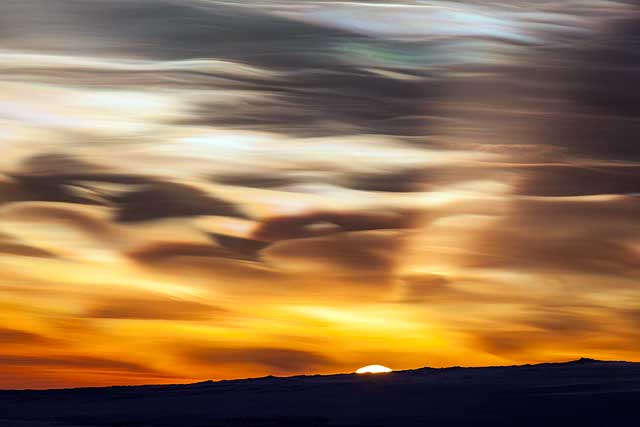|
A cloudy daySunrise in August lights up nacreous cloudsPosted August 30, 2013
Above, the sun illuminates nacreous clouds as it peeks above the horizon on Aug. 20 near McMurdo Station The next sunset won't be until Feb. 20, 2014, as the sun begins its winter hibernation once again. Nacreous clouds are rare, colorful clouds in the stratosphere that can form in the extreme cold of polar winter. They are also known as mother of pearl clouds and polar stratospheric clouds. These clouds can form 15 to 25 kilometers above sea level when the temperature in that region of the atmosphere falls to minus 78 Celsius or colder. Because of their high altitude, nacreous clouds are illuminated by the sunlight from below the horizon and are seen before dawn or after dusk. The colors in these clouds are a refraction effect. The light is entering the ice crystals, bending around and splitting up just like a prism. The beauty of the clouds does little to reveal the damage they can propagate. The clouds are a conducive environment for chemical reactions begun by pollutants in the air that result in damage to the ozone layer. |



For USAP Participants |
For The Public |
For Researchers and EducatorsContact UsNational Science FoundationOffice of Polar Programs Geosciences Directorate 2415 Eisenhower Avenue, Suite W7100 Alexandria, VA 22314 Sign up for the NSF Office of Polar Programs newsletter and events. Feedback Form |



